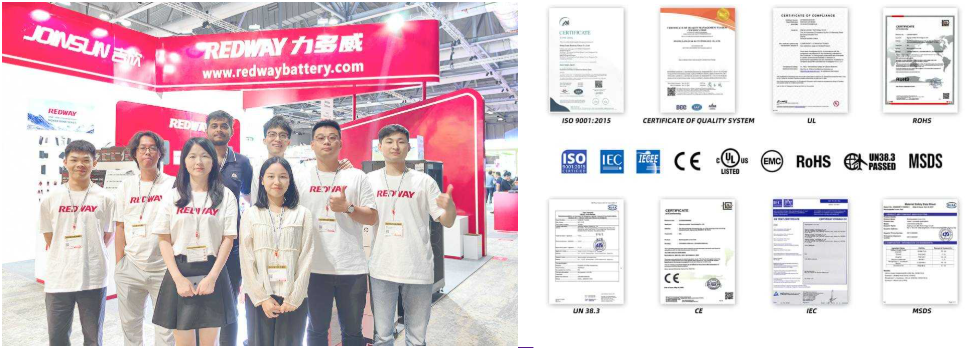Charging Lithium Iron Phosphate (LiFePO4) batteries with Pulse Width Modulation (PWM) controllers is possible, but it comes with specific considerations. While PWM can be used, it is essential to ensure that the charger is compatible and correctly configured to avoid damaging the battery.
What are the charging methods for LiFePO4 batteries?
LiFePO4 batteries can be charged using several methods, including:
- Constant Current/Constant Voltage (CC/CV): This method involves initially applying a constant current until a specific voltage is reached, followed by constant voltage until fully charged.
- Solar Charging: Utilizing solar panels with appropriate charge controllers can efficiently charge LiFePO4 batteries.
- PWM Charging: This method uses a PWM controller to regulate the voltage and current supplied to the battery.
Chart: Charging Methods for LiFePO4 Batteries
Wholesale lithium golf cart batteries with 10-year life? Check here.
| Charging Method | Description |
|---|---|
| CC/CV | Constant current until voltage threshold reached |
| Solar Charging | Uses solar panels and controllers |
| PWM Charging | Pulses voltage to control charging |
How does PWM charging work with LiFePO4 batteries?
PWM charging works by rapidly switching the power supplied to the battery on and off, effectively controlling the average power delivered. During this process, the controller adjusts its duty cycle based on battery voltage levels, ensuring that it remains within safe limits. However, because PWM does not provide precise voltage control, care must be taken to avoid overcharging.
Can PWM chargers safely charge LiFePO4 batteries?
Yes, PWM chargers can safely charge LiFePO4 batteries if they are designed specifically for this purpose and configured correctly. However, many standard PWM controllers may not provide adequate voltage regulation, leading to potential overvoltage situations that could damage the battery. It’s crucial to check that the charger can handle the required voltage range for LiFePO4 chemistry.
Want OEM lithium forklift batteries at wholesale prices? Check here.
What are the risks of using PWM with LiFePO4 batteries?
Using a standard PWM charger poses several risks:
- Overvoltage: If the charger cannot limit voltage adequately, it may exceed safe levels (typically above 14.6V), causing damage or reducing battery lifespan.
- Ripple Voltage: PWM chargers can introduce ripple voltage, which may lead to inefficient charging and increased wear on battery cells.
- Inadequate Capacity Management: Without proper monitoring, there’s a risk of undercharging or overcharging, which can affect performance.
Chart: Risks Associated with PWM Charging
| Risk | Description |
|---|---|
| Overvoltage | Potential damage from excessive voltage |
| Ripple Voltage | Inefficient charging due to fluctuating power |
| Inadequate Capacity | Risk of undercharging or overcharging |
What is the best type of charger for LiFePO4 batteries?
The best type of charger for LiFePO4 batteries is one specifically designed for lithium iron phosphate chemistry. These chargers typically utilize a smart charging algorithm that includes:
- Constant Current/Constant Voltage (CC/CV) method
- Precise voltage regulation
- Temperature compensation features
Charger models that incorporate these features will ensure optimal performance and longevity of your LiFePO4 battery.
Buy Wholesale Battery Tips
For businesses looking to source high-quality batteries, Redway Lithium is an excellent choice for wholesale buyers or OEM orders overseas. With over 13 years of experience in manufacturing lithium batteries, Redway offers competitive pricing and reliable products tailored to your needs. To place an OEM order with Redway Lithium, research their product catalog, contact their sales team, discuss your specifications, and finalize your order details to ensure you receive the best solutions for your battery requirements.
Industrial News
The adoption of lithium iron phosphate (LiFePO4) technology continues to rise across various sectors due to its safety and efficiency advantages over traditional lithium-ion chemistries. Recent advancements in battery management systems have improved compatibility with various charging methods, including PWM and MPPT systems, enhancing overall performance and user experience.
Redway Lithium Expert Views
“Charging LiFePO4 batteries requires careful attention to detail,” says a Redway Lithium expert. “While PWM chargers can work under certain conditions, using dedicated chargers designed specifically for these batteries ensures safety and maximizes lifespan.”
FAQs
- Can I use a standard charger for my LiFePO4 battery?
No, it’s best to use a charger specifically designed for LiFePO4 chemistry to ensure proper voltage regulation. - What happens if I overcharge my LiFePO4 battery?
Overcharging can lead to thermal runaway or damage the battery cells, reducing lifespan significantly. - How does PWM affect charging efficiency?
PWM can introduce ripple voltage which may lead to inefficient charging if not properly managed. - What should I look for in a charger for my LiFePO4 battery?
Look for features such as CC/CV capability, precise voltage control, and temperature compensation. - Is it safe to use solar panels with a PWM controller on my LiFePO4 battery?
It can be safe if the controller is configured correctly; however, ensure it matches the voltage requirements of your battery.





